Capone, Torrio and the Sunshine City, St. Petersburg, Florida
Chicago underworld figures invested heavily in Florida’s 1920s land boom
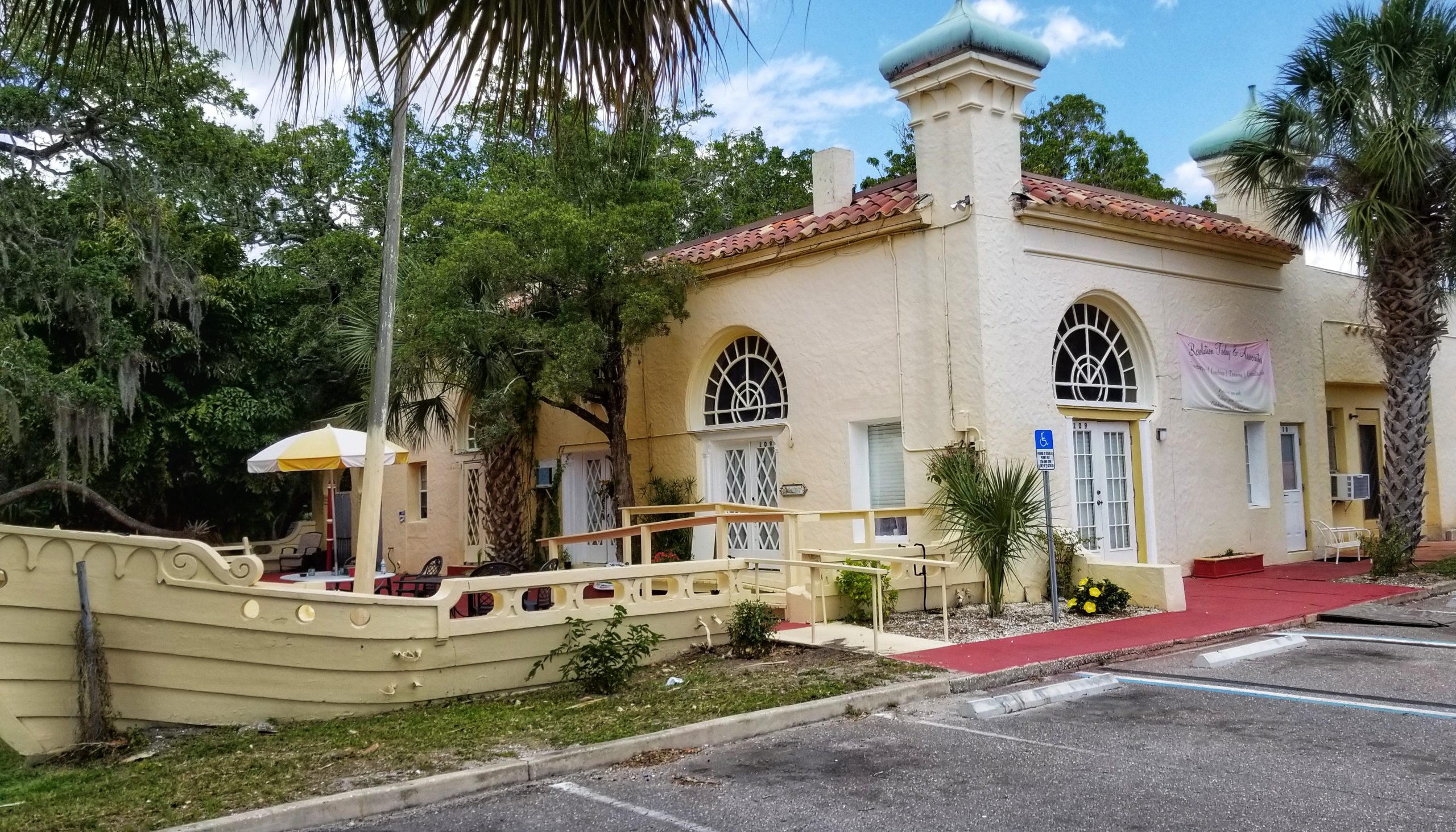
Ninety-five years ago, during the summer of 1925, Florida was in the midst of a massive land boom. Real estate speculators and developers from around the country were descending on the Sunshine State with dreams of striking it rich dealing in property. One of the hottest places was St. Petersburg, a burgeoning city located on the Pinellas peninsula buffered by Tampa Bay to the east and the Gulf of Mexico to the west. Known as the Sunshine City, St. Petersburg was awash in development and money.
One company attracted by the real estate market was the Manro Corporation. Not much was known locally at first about this conglomerate. But word soon got out who the principals were. The first was a local real estate agent, Robert Vanella. But the other three — Johnny Torrio, Jake “Greasy Thumb” Guzik and Alphonse Capone — were infamous. Torrio was a Brooklyn-born mobster who relocated to Chicago and became an underworld powerhouse. One of his partners was Guzik, nicknamed Greasy Thumb for his proclivity for paying bribes to politicians and police. And then there was Al Capone, Torrio’s successor to the Chicago underworld crown, and soon to be one of the most recognizable gangsters in American history.
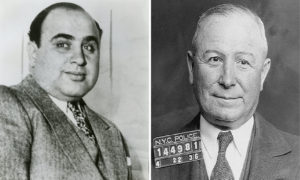
The Manro Corporation started buying swaths of property, including more than twenty acres on Boca Ciega Bay, between St. Petersburg and the barrier islands of the beach towns. This parcel of land is now the Twin Brooks golf course, owned by the City of St. Petersburg. They also bought residential lots and platted subdivisions.
While Torrio, Guzik and Capone were buying property, a local developer, Walter Fuller, built a nightclub/restaurant, the Gangplank, on the west side of town, in a neighborhood known as the Jungle. The club, opened in 1924, was on Boca Ciega Bay. The Gangplank was touted as the hottest ticket in town. Billed as an “ideal mecca for the St.Petersburg younger set to top off an enjoyable evening,” the Gangplank offered great entertainment. In addition to the house band, The Gangplank Orchestra, entertainers from Duke Ellington to Nat King Cole played the Gangplank. It was a meeting place for local bootleggers as well.
The Gangplank was also a speakeasy. It was alleged that servers would bring illicit alcohol to patrons in teacups, keeping up the veneer of respectability and high society. There are rumors of tunnels that ran from the Gangplank out to the Bay, but those could never be confirmed. However, the body of water the club was located on, Boca Ciega Bay, was a known hotspot for rum-running during Prohibition (and running other kinds of contraband during the 1970s).
Next to the Gangplank is a boat ramp (and an interesting historical marker. Spanish explorer Panfilo de Narvaez landed there in 1528 to begin an expedition of North America.). A small ferry shuttled gamblers from the boat ramp out to a gambling ship that sat three miles west of John’s Pass (one of the passes that connects Boca Ciega Bay to the Gulf of Mexico). The ship, the S.S. Monte Carlo, was rumored to have been financed by Torrio and, some say, Al Capone. The Monte Carlo held a soft opening on Christmas Day 1930. The St. Petersburg Times described it succinctly as a “big floating pleasure palace.”
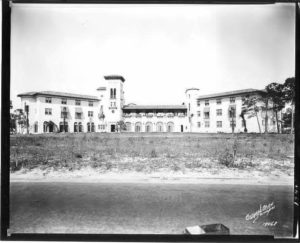
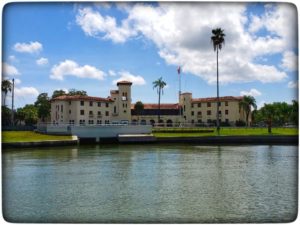
Just down the street from the Gangplank, Fuller constructed the Jungle Country Club Hotel, complete with a golf course and nearby private airstrip. The hotel opened on February 10, 1926, and was an immediate hit, called “the social triumph of the season.” February was the height of the tourist “winter season,” so the hotel was packed with Northerners fleeing the cold. Entertainment was provided by the McGee Sisters, dancers who at that time had starred in “two moving pictures,” and Norman Mayer’s Jungle Serenaders.
Not soon after opening, sometime in mid-1926, Torrio and a handful of his men (the names of who came with Torrio were not recorded) stayed at the hotel. Walter Fuller confirmed this to the St. Petersburg Times in 1967, affirming that Torrio came to stay there while he was looking over the Manro Corporation’s properties in the Sunshine City. Torrio also personally bought a speakeasy in south St. Petersburg called the Green Cabin, as well as properties on St. Pete Beach.
It was also around this time that sightings of Al Capone in St. Petersburg started to surge. Some say he built a house for his mother in north St. Petersburg. Others say he owned large mansions in South St. Pete. When Babe Ruth came to town for spring training, Capone supposedly was there watching. Another prestigious hotel on St. Pete Beach, the Don CeSar, even had the notation that Al Capone stayed there until recently, when it removed the reference after research concluded Capone was never there.
There were also persistent rumors that Capone drank at the Gangplank and stayed at the Jungle Country Club Hotel. Jennifer Grabowski is a St. Petersburg native and Lower School principal at Admiral Farragut Academy (whose main building is the old hotel). Jennifer heavily researched the history of the Jungle Country Club Hotel and surrounding neighborhoods. “For years we were always told that Al Capone stayed at Farragut (when it was the country club). And that we had tunnels under the school that he ran liquor from. Once I became interested and researched the history, I realized it was only his henchmen who stayed there.”
There is some evidence that Capone did at least stop in town on a couple of occasions. In 1927 he gave a press conference to reporters in Chicago stating that he was “leaving for St. Petersburg, Florida.” And in February of 1931, local newspapers covered a trip Capone and some friends took to Tarpon Springs and St. Petersburg, driving up from Miami Beach. It was mentioned he only stayed a few hours in St. Pete.
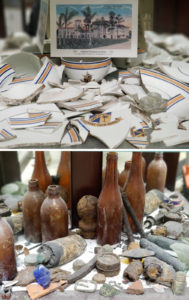
The good times didn’t last long. The Depression put an end to the Florida land boom, and tourism took a hit. The Gangplank closed around 1932, the same time the S.S. Monte Carlo stopped operations. The Jungle Country Club Hotel closed soon afterward. In 1945 the hotel was sold and became Admiral Farragut Academy, which is a naval-affiliated pre-K-to-12th private college prep boarding and day school. The school uses the former dining room as its mess hall, and the hotel rooms are dorms for boarding students.
Jennifer Grabowski has also helped collect a lot of artifacts from the school’s days as a hotel. “The dumping ground for the hotel was the creek. Before they secured it, artifacts would come up.” School kids would dig up perfume bottles, Suwanee milk bottles and bits of china from the hotel’s restaurant.
Walter Fuller lost everything in the Depression as well. He was forced to sell his house, which was located across the street and three doors down from the hotel, on the water. It was rumored that while he lived there, a rum pirate was being chased through Boca Ciega Bay. The pirate offloaded some of his rum barrels to Fuller, who hid them in the attic of his house. When Fuller sold the house to his uncle, Grabowski says, “Fuller forgot about the barrels of rum. When his uncle took over, Fuller had to sneak in the middle of the night and get it out.”
Johnny Torrio, who had ostensibly retired from Mob life, moved to St. Petersburg full time around 1929, leaving in 1932, though he still visited from time to time. He was named during the Kefauver Hearings in 1950 as part of a real estate deal with the sheriff of neighboring Hillsborough County. He died in Brooklyn in 1957.
Al Capone was convicted in Chicago of tax evasion in October 1931. He was sentenced to prison in 1932 and paroled in 1939. But his days as an underworld kingpin were over. Racked by the effects of untreated syphilis, Capone spent the last years of his life at his Miami Beach house. He died in January 1947.
But the legend of Capone in St. Petersburg lives on through some excellent examples of 1920s Floridian architecture, old property records, a municipal golf course and a lot of urban legends and tall tales.
Scott M. Deitche is an author specializing in organized crime. His books include Cigar City Mafia: A Complete History of the Tampa Underworld and Garden State Gangland: The Rise of the Mob in New Jersey. He is also a member of The Mob Museum’s Advisory Council. Scott lives in St. Petersburg, Florida.
Feedback or questions? Email blog@themobmuseum.org





